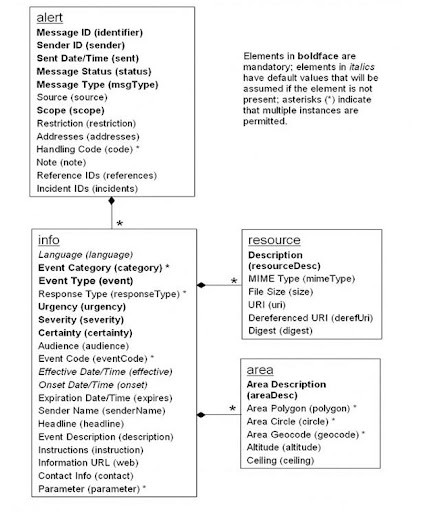Data schema
Stay organized with collections
Save and categorize content based on your preferences.
The following diagram shows the major elements to include in an alert.

Source: CAP V1.2
Except as otherwise noted, the content of this page is licensed under the Creative Commons Attribution 4.0 License, and code samples are licensed under the Apache 2.0 License. For details, see the Google Developers Site Policies. Java is a registered trademark of Oracle and/or its affiliates.
Last updated 2025-08-28 UTC.
[[["Easy to understand","easyToUnderstand","thumb-up"],["Solved my problem","solvedMyProblem","thumb-up"],["Other","otherUp","thumb-up"]],[["Missing the information I need","missingTheInformationINeed","thumb-down"],["Too complicated / too many steps","tooComplicatedTooManySteps","thumb-down"],["Out of date","outOfDate","thumb-down"],["Samples / code issue","samplesCodeIssue","thumb-down"],["Other","otherDown","thumb-down"]],["Last updated 2025-08-28 UTC."],[],["The provided source indicates the existence of a diagram outlining the major elements of an alert, as specified by the CAP V1.2 standard. This implies the document contains a visual representation detailing the critical components required when constructing an effective alert, according to the Common Alerting Protocol version 1.2. Further details are located in the CAP-V1.2 document.\n"]]
